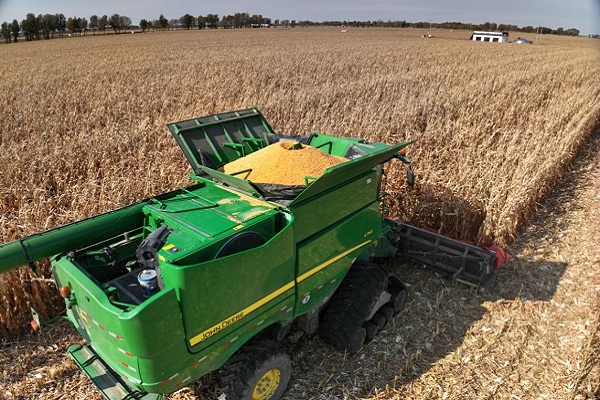Jilin's smart farming boosts corn yields on saline land

A corn field in Jilin province. [Photo provided to gojilin.gov.cn]
In golden October, the fields of Northeast China's Jilin province are abuzz with harvest machines as corn fills the granaries. By the middle of the month, over one-third of the province's corn had been harvested, with yields showing remarkable growth.
Behind these gains lies an innovation quietly transforming farming across the province – integrated water and fertilizer management technology.
At the national pilot zone for saline-alkali land utilization in Qian'an, the new system has delivered striking results. According to Liu Huitao from the Jilin Academy of Agricultural Sciences, corn grown on mildly saline land reached an average yield of 906 kilograms per mu (0.07 hectares), 35.4 percent higher than conventional planting. At the same time, moderately saline plots averaged 825 kg per mu, up more than 30 percent.
The technology has taken root particularly in Baicheng and Songyuan, covering nearly 6 million mu and 3.73 million mu, respectively. On average, each mu saves over 30 metric tons of water and improves fertilizer efficiency by about 30 percent.
Between 2022 and 2024, this technique was extended across Jilin, Inner Mongolia, and Xinjiang, reaching 52.53 million mu and increasing farmers' income by 14.26 billion yuan ($2 billion). In Qian'an, some plots have surpassed 1,000 kg per mu, setting local records. In Jilin, the system's application area grew to 7.35 million mu in 2024 and is expected to exceed 10 million mu this year.
This success stems from nearly two decades of research and innovation led by the provincial agricultural science team. Since 2006, they have overcome multiple technical barriers to adapt the system for semi-arid regions. Beyond productivity, the ecological benefits are clear: after three years of use, plow layer thickness deepened to 30 centimeters, soil fertility grade by 0.5 levels, water-use efficiency improved by 43.1 percent, and fertilizer use per yield unit dropped 30 percent, helping curb non-point pollution.
